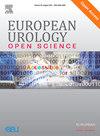Incidence and Risk of Thromboembolic and Cardiovascular Adverse Events with PARP Inhibitor Treatment in Patients with Metastatic Castration-resistant Prostate Cancer: A Systematic Review and Safety Meta-analysis
IF 3.2
3区 医学
Q1 UROLOGY & NEPHROLOGY
引用次数: 0
Abstract
Background and objective
PARP inhibitor (PARPi) treatment is an effective option for patients with metastatic castration-resistant prostate cancer (mCRPC). There are few data on the cardiovascular and thromboembolic safety of these agents in mCRPC, as cardiovascular and thromboembolic adverse events (AEs) are uncommon. Our aim was to analyze the incidence and risk of major adverse cardiovascular events (MACEs), thromboembolic events, and hypertension with PARPi therapy in mCRPC.
Methods
We conducted a systematic review and meta-analysis in accordance with the Preferred Reporting Items for Systematic Reviews and Meta-Analyses (PRISMA) statement. We systematically searched the PubMed, EMBASE, and Cochrane databases and the American Society of Clinical Oncology and European Society of Medical Oncology meeting abstracts for clinical trials on PARPi use in mCRPC up to March 31, 2024. We analyzed the pooled incidence of all-grade and high-grade MACEs, thromboembolic events, and hypertension, and calculated risk ratios (RRs) for PARPi versus non-PARPi treatment.
Key findings and limitations
We included 11 phase 2 or 3 trials in our meta-analysis. Hypertension was the most common AE for both any-grade (17.2%) and high-grade (9.3%) events. In comparison to other treatments, PARPi was associated with significantly higher risk of high-grade MACEs (RR 2.03; p = 0.03) and thromboembolic events (RR 2.15; p = 0.002), especially venous thromboembolism (VTE; RR 2.13; p = 0.004) and pulmonary embolism (RR 3.60; p = 0.001). The risk of hypertension, any-grade MACEs, and thromboembolic AEs was not significantly higher, apart from VTE (RR 2.17; p = 0.01).
Conclusions and clinical implications
There is higher risk of high-grade cardiovascular and thromboembolic toxicity with PARPi use in comparison to other treatments in mCRPC, although these toxicities are rare. Clinicians should be aware of this risk, especially in a population that often has comorbidities and concomitant treatments, for correct monitoring and management of these AEs.
Patient summary
Drugs called PARP inhibitors are very effective in the treatment of metastatic prostate cancer that does not respond to hormone treatment. However, their use is associated with some cardiovascular adverse events, although these are rare. Our study shows that these events seem to be more frequent with PARP inhibitors than with other treatments, especially for severe grades. Doctors and patients should be aware of this risk to help in preventing, recognizing, and managing the occurrence of these rare complications.
求助全文
约1分钟内获得全文
求助全文
来源期刊

European Urology Open Science
UROLOGY & NEPHROLOGY-
CiteScore
3.40
自引率
4.00%
发文量
1183
审稿时长
49 days
 求助内容:
求助内容: 应助结果提醒方式:
应助结果提醒方式:


